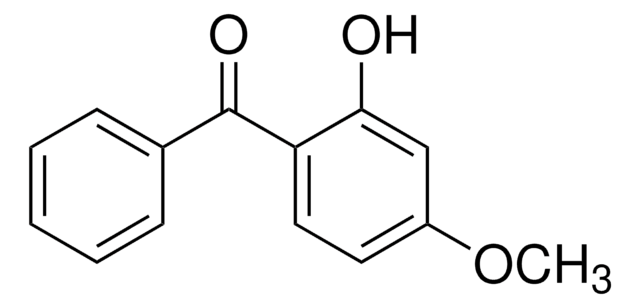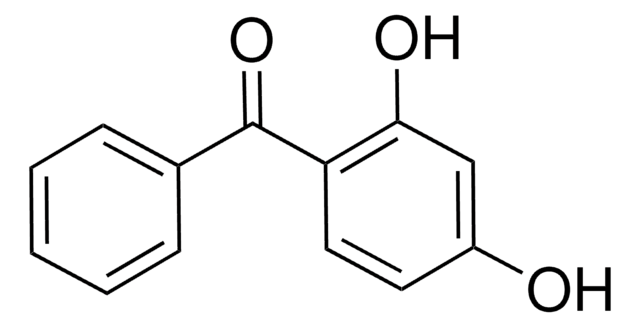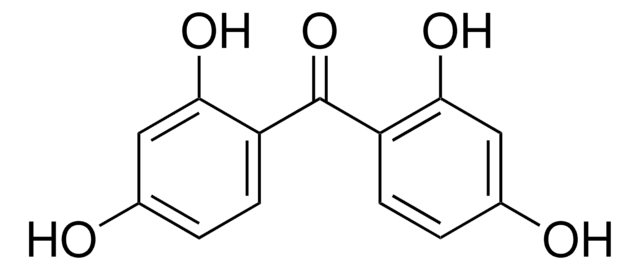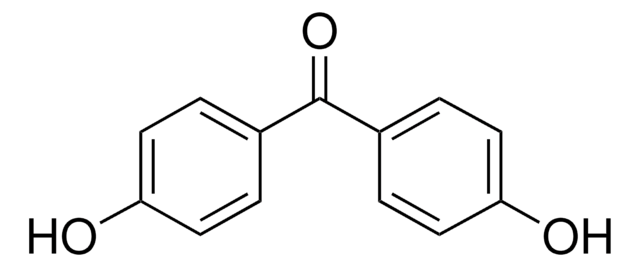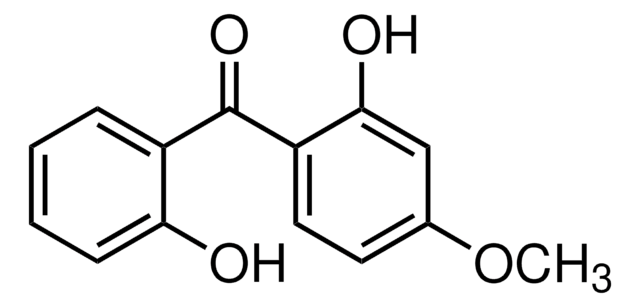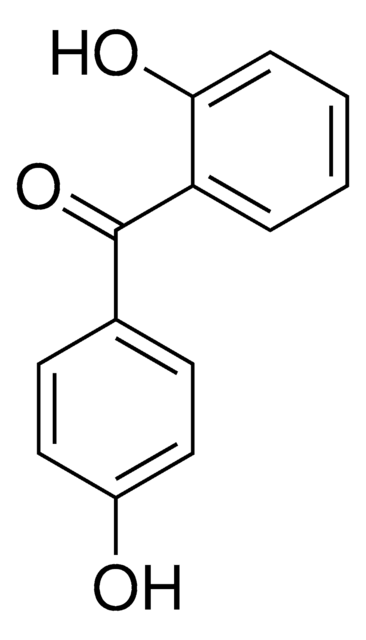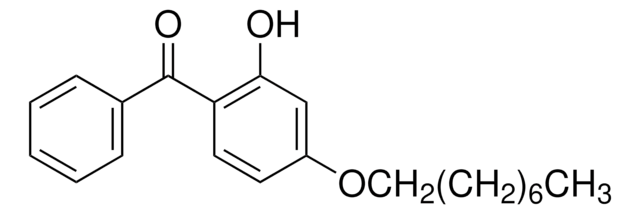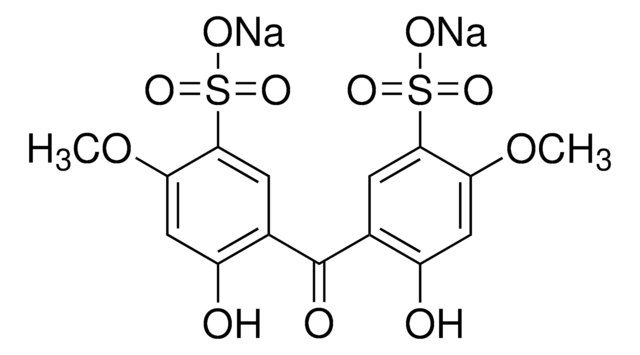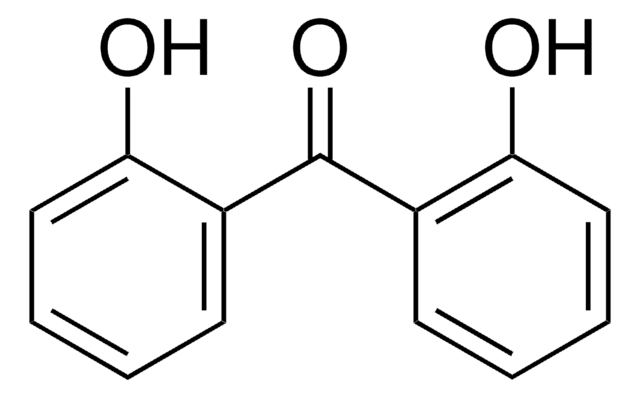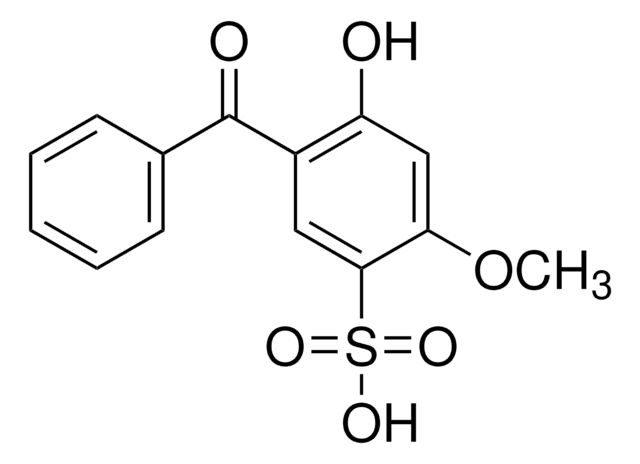About This Item
Recommended Products
Quality Level
Assay
99%
form
powder
mp
144.5-147 °C (lit.)
SMILES string
Oc1ccc(c(O)c1)C(=O)c2ccccc2
InChI
1S/C13H10O3/c14-10-6-7-11(12(15)8-10)13(16)9-4-2-1-3-5-9/h1-8,14-15H
InChI key
ZXDDPOHVAMWLBH-UHFFFAOYSA-N
Gene Information
rat ... Ar(24208)
Looking for similar products? Visit Product Comparison Guide
Related Categories
Application
- Substituent Effects on the Ultraviolet Absorption Properties of 2, 4-Dihydroxy Dibenzophenone: This research examines how different substituents affect the UV absorption characteristics of 2,4-dihydroxybenzophenone, a compound important for its UV protective properties (Wu et al., 2022).
- Kevlar® and Nomex modification via 2, 4-dihydroxybenzophenone anchoring improves water repellency and induces antibacterial and UV protection properties: Explores the enhancement of Kevlar and Nomex fabrics by anchoring 2,4-dihydroxybenzophenone to improve their functional properties (Tonis et al., 2023).
Legal Information
Signal Word
Warning
Hazard Statements
Precautionary Statements
Hazard Classifications
Aquatic Chronic 2 - Eye Irrit. 2 - Repr. 2
Storage Class Code
11 - Combustible Solids
WGK
WGK 2
Flash Point(F)
257.0 °F
Flash Point(C)
125 °C
Personal Protective Equipment
Regulatory Listings
Regulatory Listings are mainly provided for chemical products. Only limited information can be provided here for non-chemical products. No entry means none of the components are listed. It is the user’s obligation to ensure the safe and legal use of the product.
JAN Code
126217-500G:
126217-100G:
126217-BULK:
126217-VAR:
126217-5G:
Choose from one of the most recent versions:
Already Own This Product?
Find documentation for the products that you have recently purchased in the Document Library.
Customers Also Viewed
Our team of scientists has experience in all areas of research including Life Science, Material Science, Chemical Synthesis, Chromatography, Analytical and many others.
Contact Technical Service